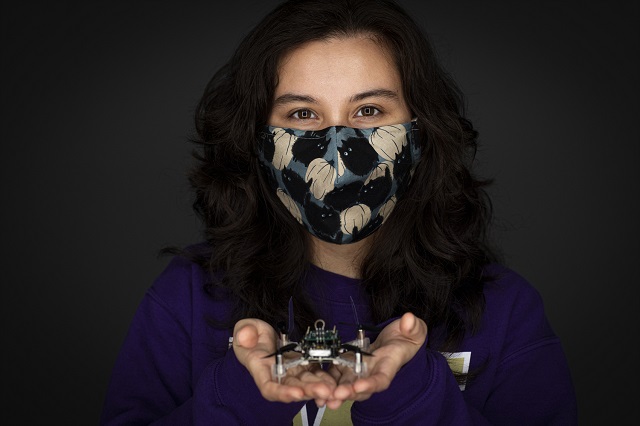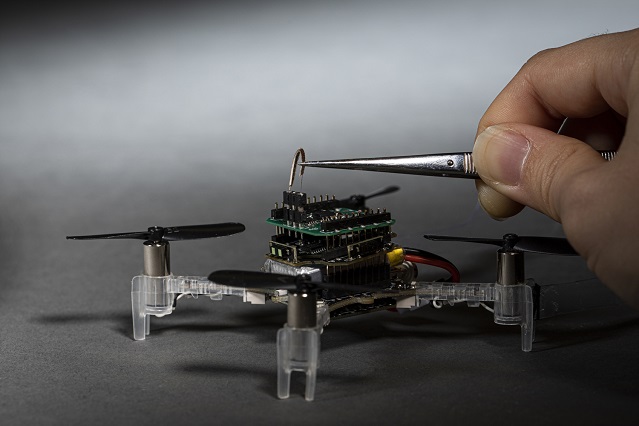
Melanie Anderson, a doctoral student of mechanical engineering, holding the Smellicopter. Credit: Mark Stone/University of Washington
Smellicopter is a new word to be added to the dictionary thanks to graduate students from the University of Washington who have developed new drone tech.
Think about it: Small flying drones which can smell. We all know how they once used canaries to sniff for gas and so forth in mines so that minors could be warned of trouble. Now, these tiny drones will be able to navigate in and out of small spaces where people cannot go.
Now think about people trapped after a disaster like an earthquake or a building collapse. Rescue workers search for days trying to find survivors who may be unconscious or so covered in debris that no one can hear them.
Will you offer us a hand? Every gift, regardless of size, fuels our future.
Your critical contribution enables us to maintain our independence from shareholders or wealthy owners, allowing us to keep up reporting without bias. It means we can continue to make Jewish Business News available to everyone.
You can support us for as little as $1 via PayPal at office@jewishbusinessnews.com.
Thank you.
But what’s really cool here is how the Smellicopter works. The new device uses live antenna from moths. Apparently the antennae from the Manduca sexta hawkmoth can continue to function for a while after having been removed. They are then attached to the drone to form a biohybrid.
“Nature really blows our human-made odor sensors out of the water,” said lead author Melanie Anderson, a UW doctoral student in mechanical engineering. “By using an actual moth antenna with Smellicopter, we’re able to get the best of both worlds: the sensitivity of a biological organism on a robotic platform where we can control its motion.”
So large synthetic components would not fit on such a small device. And they are not capable of sensing the same scents that the moth antennae can smell. So it was really a genius idea to combine the animal component to the mechanical drone.
“From a robotics perspective, this is genius,” said co-author and co-advisor Sawyer Fuller, a UW assistant professor of mechanical engineering. “The classic approach in robotics is to add more sensors, and maybe build a fancy algorithm or use machine learning to estimate wind direction. It turns out, all you need is to add a fin.”




